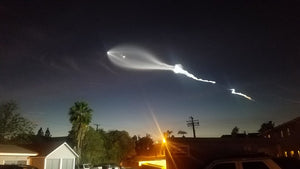Perseid Meteor Shower, Double Double & Ring Nebula
Saturn and Neptune at Opposition
This September, two planetary oppositions present a masterclass in telescopic observation, highlighting the dramatic scale of our solar system. Saturn culminates on the 21st, followed by Neptune on the 23rd, offering a study in stark contrasts from the eyepiece.
Saturn (September 21st): Despite shining at a subdued magnitude +0.7 due to its rings being presented nearly edge-on, Saturn remains a premier telescopic target. This rare geometry offers a unique opportunity. Instead of a broad, brilliant ring system, observers will be treated to a delicate, razor-thin line bisecting the planet's oblate golden disc. This perspective dramatically flattens the planet's appearance, emphasizing its three-dimensional structure. The challenge now is to spot the fainter moons that often hide in the rings' glare. Titan will be an easy catch, but keen eyes under steady skies may seek out Tethys, Dione, and Rhea dancing closer to the ring plane.
Neptune (September 23rd): At a faint magnitude +7.8, Neptune is a true telescopic quarry. Finding it requires a goto mount or precise star-hopping in Pisces. The reward is not detail, but presence. At high magnification on a night of good seeing, Neptune resolves into a tiny, perfect disc, distinctly non-stellar and possessing a subtle, steady blue-grey hue—a color unmistakably planetary. While its moon Triton requires larger apertures and careful observation to spot, the primary goal is simply to apprehend that faint dot. It is the entire visible manifestation of a distant giant world, a profound reminder of the vast distances that define our cosmic neighborhood.
For the observer, these two nights provide a perfect continuum: from the complex, structured beauty of a relative neighbor to the humbling, minimalist point of light that represents the frontier of our Sun’s domain.
M15-Great Pegasus Cluster (NGC 7078)
Nestled in the constellation Pegasus, easily located by its proximity to the bright star Enif, the globular cluster M15 offers a glimpse into a deep and structured past. Even from suburban skies, a simple pair of binoculars reveals it as a faint, fuzzy star—a hint of the immense gravitational collective lurking within. Through a telescope at modest magnification, around 35x, this faint patch transforms into a soft, comet-like glow, a granular haze that suggests the myriad stars just beyond resolution. Pushing the magnification higher, to around 100x, reveals its true nature: a fiercely bright, condensed core that dominates the view, fading gradually across two-thirds of its breadth toward the edge, a telltale sign of a gravitational core collapse in progress—a dynamic fossil from the youth of our galaxy. In that bright, unresolved center lies the combined light of hundreds of thousands of ancient suns, a spherical hive of stellar journeys whose light has traveled over 30,000 years to reach us. It is a humbling sight: not just a cluster, but a relic of cosmic construction, a reminder of the multitudes of worlds that may orbit those distant, crowded suns.
M27 – The Dumbbell Nebula
Easily found within the faint constellation of Vulpecula, the Dumbbell Nebula (M27) stands as one of the most accessible and rewarding planetary nebulae in the northern sky. Through a pair of binoculars under dark skies, it announces itself not as a star, but as a faint, ghostly oval of light—a hint of structure waiting to be unveiled. A small telescope, perhaps at 35x, transforms this pale smudge into its namesake shape: a distinct hourglass or apple-core form, etched from luminescent gas.
Increasing the magnification to around 100x under steady skies reveals the nebula's profound depth and subtle complexity. The two bright lobes, the interlocking halves of the cosmic dumbbell, glow with a soft, greenish-grey light, while fainter, more ethereal extensions stretch outward into the vacuum, challenging the observer’s aperture and patience. And at the heart of this expanding cloud of stellar debris lies the nebula’s creator: a faint, blue-white white dwarf star—the exposed core of a sun-like star that gently shed its outer layers millennia ago.







